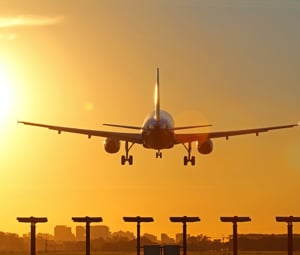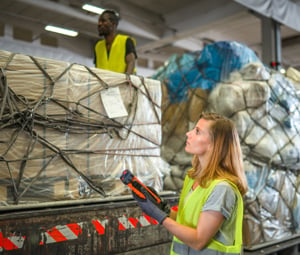Search all reports
Browse through the IATA Economics report library.
496 reports found
The older cargo fleet hampers emissions reductions
Aircraft in service in passenger operations are, on average, 13 years old. The average age of aircraft flying cargo is significantly higher, at 25 years.
- Chart of the Week
Gender diversity in aviation improving, but more to be done
The industry’s commitment to improving the gender balance is starting to deliver results.
- Chart of the Week
Greenhouse gases in review
Greenhouse gases (GHG) include not only carbon dioxide (CO2) but also methane (CH4), nitrous oxides (NOx), and others. How much various parts of the global economy generate of all the greenhouse gases can be seen in the chart.
- Chart of the Week
Weather-related operational disruptions are rising
Impact of weather events on flight delays in Europe: Minutes of weather-related air traffic flow management (ATFM) delay per flight & weather delay in % of total ATFM delay.
- Chart of the Week
International demand from PR China has yet to recover
PR China remained under strict travel policies for three years, while the rest of the world closely watched for its reopening and the effects it would have on the global economy and air traffic numbers.
- Chart of the Week
Air freighters increase market share on transpacific route
In the fourth quarter of 2023, the airline industry recorded 58.2 billion international Cargo Tonne-Kilometers (CTKs), which amounts to 99% of the Q4 2019 level and 92% of the peak demand observed in Q4 2021.
- Chart of the Week
International traffic grew in all major route areas in 2023
All major international route areas expanded in 2023 on year-on-year basis. International passenger traffic saw a significant resurgence, with global Revenue Passenger Kilometers (RPKs) soaring by 42% over the previous year.
- Chart of the Week
2023 saw a stellar industry-wide performance
Industry-wide traffic, measured in Revenue Passenger Kilometers (RPK), grew by an impressive 36.9% in 2023 compared to 2022, and reached 94.1% of 2019 levels.
- Chart of the Week
Geopolitical tensions disrupt airline competitive landscape
Recent geopolitical disruptions have impacted jet fuel prices in Europe and the Commonwealth of Independent States (CIS) disproportionately.
- Chart of the Week
French domestic flight bans and carbon emissions reductions
In June 2023, France formally introduced a ban on direct domestic flights that could be replaced by a train ride lasting no more than 2 ½ hours.
- Chart of the Week



